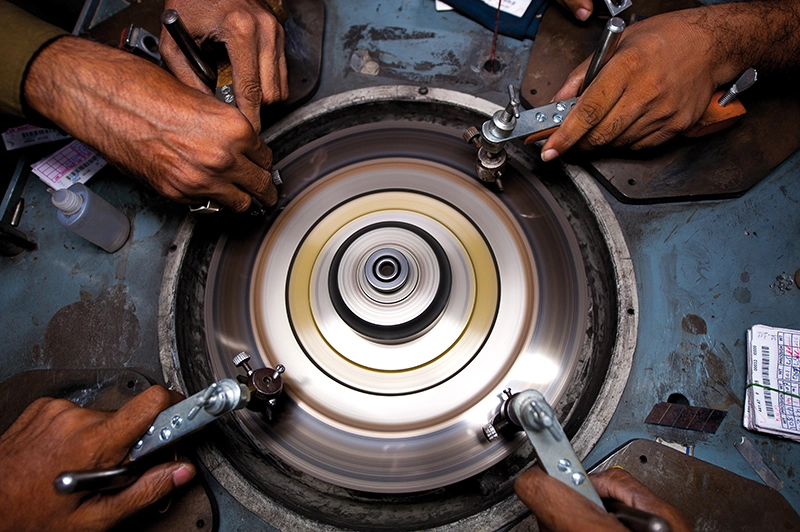DIAMONDS AND INDIA

India has a rich history in diamonds, having been the earliest known source and early diamond cutter. Today, it is the main center for diamond manufacturing, producing 90 percent of the world’s diamonds. The country is also the largest employer of cutters, with around one million of them working in the industry. Surat, located close to Mumbai, is the largest cutting center in India, employing half of the country’s cutters.
India’s ascent as a cutting center started in the late 1960s, based on the manufacturing of “near-gem” or Indian goods. This procedure involves cutting small diamonds and is mainly labor-intensive. Even since the early 1990s, the industry has increased fivefold. In 2005, India imported $7.6 billion worth of rough diamonds and exported $1.16 billion of polished stones. These figures reflect a complex set of related imports and exports, but they demonstrate that India remains the largest cutter and has made diamonds accessible to all.
Diamond cutting factories in India can be divided into three types: large state-of-the-art factories employing over 250 people, smaller factories with 100 or more people, and cottage or informal industries employing less than 100 people. The last category comprises over half of India’s cutters and has faced criticism for sweatshop conditions and the use of child labor. However, industry sources claim that the use of child labor in factories has significantly reduced since the late 1990s, after widespread exposure.
While there has been an increase in modern factories with more mechanized cutting facilities, the informal sector will continue as the largest cutting sector for now, as it remains the cheapest way of cutting small stones in quantity. India’s diamond cutting industry is supplied mainly by De Beers’ mines and Rio Tinto’s Argyle mine in Australia through Antwerp. With the rise of more kimberlite mines, India’s position as the world’s largest diamond cutter seems secure.
